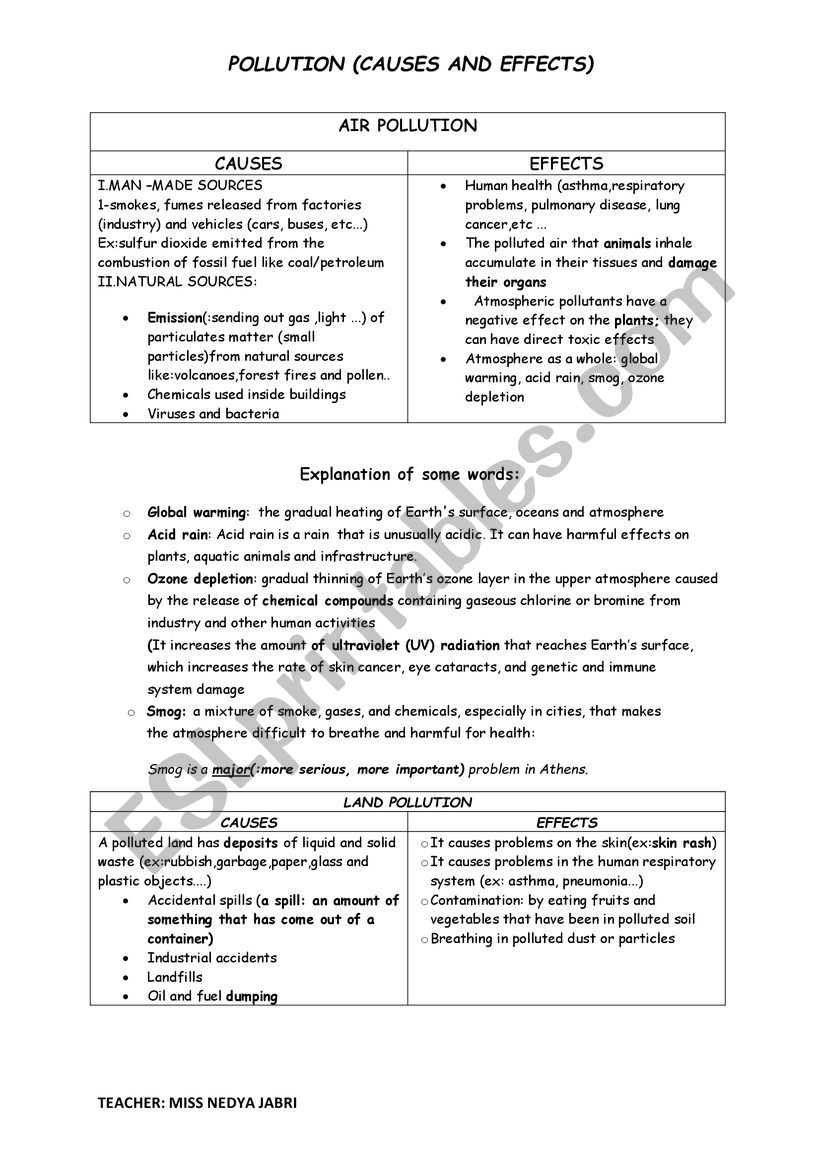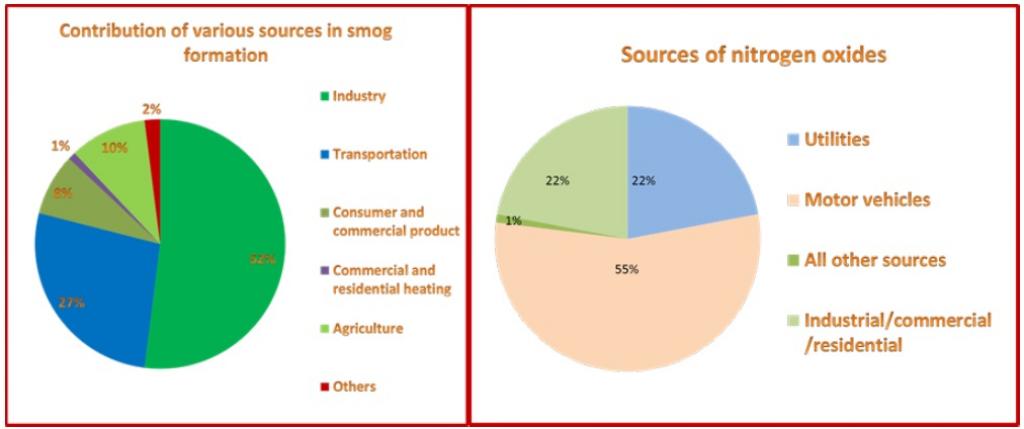Smog is a type of air pollution that is characterized by a thick, hazy mixture of pollutants in the air. It is usually visible as a brownish or grayish cloud that hangs low in the sky and can be harmful to human health and the environment. There are many causes of smog, and its effects can be significant and far-reaching.
One of the main causes of smog is the burning of fossil fuels, such as coal, oil, and natural gas. These fuels release pollutants into the air when they are burned, including carbon dioxide, nitrogen oxides, and particulate matter. The burning of fossil fuels is a major contributor to smog, especially in areas with high levels of industrial activity or heavy traffic.
Another cause of smog is the release of chemicals and other pollutants into the air. This can include the emissions from factories, power plants, and other industrial facilities, as well as the release of chemicals from pesticides, solvents, and other products. These pollutants can contribute to the formation of smog and make it more harmful to people and the environment.
The effects of smog can be severe and wide-ranging. It can cause a range of respiratory problems, including asthma, bronchitis, and other respiratory illnesses. It can also irritate the eyes, nose, and throat and make it difficult to breathe. Smog can also have negative effects on the environment, including the harm to plants and wildlife.
In addition to the direct health effects, smog can also have indirect effects on society. For example, smog can reduce visibility, which can be a hazard for drivers and pilots. It can also affect agricultural productivity, as smog can reduce the amount of sunlight that reaches the ground, which can have a negative impact on crop yields.
To address the problem of smog, it is important to address the underlying causes. This can include measures to reduce the burning of fossil fuels, such as promoting the use of clean energy sources and improving fuel efficiency. It can also include regulations to reduce the release of pollutants into the air from industrial facilities and other sources. By addressing these issues, we can help to reduce the harmful effects of smog and improve the air quality for everyone.
Learn About the Causes and Effects of Smog

When people think of air pollution, most immediately picture heavy smog drifting over cities and industrial plants. The blend of two words, smoke, and fog, contributes to the development of the word smog. Smog affects highly industrialized areas of the world, large metropolitan cities with high population density and large volumes of traffic as well as areas where pollution control measures are weakly implemented. Journal of Environmental Sciences, 23 12 , 2013-2018. On the other hand, smog also causes several negative effects to the plants and vegetation Wang et al.
Effects of Smog

Most of the atmospheric pollutants in Los Angeles are primary pollutants caused by combustion of fuels in cars, trucks, and other vehicles. You can also try to buy your food from local farmers instead of conventional stores in order to further improve your ecological footprint. For instance, coal induced smog has been widely experienced in London up to the middle ages of the 20th century. Conclusion The consensus of scientists over the past quarter century, especially the last decade, has warned that if the population of the planet were to immediately discontinue polluting the air with automobile and other greenhouse emissions, climate changes would still continue long into the future. Similarly, allergy is hard to prove, but a significant level of air pollution and smog may also increase the probability of allergies. Coal burning is useful for many things: from powering industries and power plants to heating individual buildings and cooking food.
What Causes Smog?

Ozone is a greenhouse gas made of three atoms of oxygen. As a result, smog is common in such areas. Smog is formed when certain chemicals in our atmosphere interact with the sunlight, which in turn leads to visible air pollution which we call smog. The effects may be worse if the level of dampness and air suspended has a high percentage of particulate matter. Others come from human-made sources, including products such as paints, pesticides, solvents, and processes such as fuel production and combustion. It is composed of nitrogen oxides, ozone, sulfur oxide, smoke, dust, and other such pollutants. According to several sources, the term was first coined by Dr.
Air Pollution: Cause and Effect

As a result, the amount of Vitamin D produced is low due to the slow rate of metabolism of phosphorus and calcium available in the bone marrow. Especially since the industrial revolution period, the smog issue has vastly increased since much more material products are produced which in turn is a big contributor for smog. Photochemical Smog Synonymous with summer smog, photochemical smog is a chemical reaction among sunlight, nitrogen oxides, and volatile organic compounds in the atmosphere. Thus, if our lungs are contaminated with smog-related pollutants, the risks of long-term complications grow significantly. When they are unable to adapt to breathing and surviving in the suffocating, toxic environment, they die. Airborne particulate matter reduces visibility and is the reason smog appears brown.
What Are the Harmful Effects of Smog?

For this reason, Beijing has a high percentage of air pollutants which trigger the occurrence of smog. One such strategy is the Nonetheless, this measure only monitors the levels of the smog-causing 7. Tropospheric Ozone is also one of the major causes of air pollution. Studies reveal that illnesses such as colds and pneumonia are strongly related to smog. Javed Hayat Khan graduated from King Edward Medical College, Lahore, and trained in Medicine and Pulmonary Diseases at the Stobhill General Hospital, Glasgow, UK, and the world-renowned Royal Brompton Hospital, London, UK. Due to urbanization, smog has taken over most of the urban areas across the globe.







